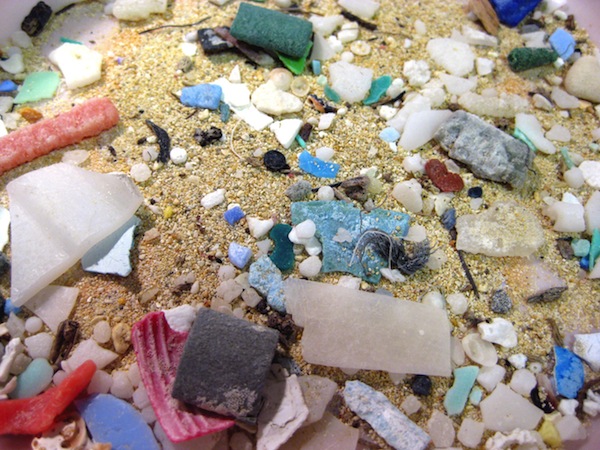Lake Erie Has Garbage Patch That Rivals Those in Oceans

As if loads of toxic algae weren’t enough, Lake Erie has come up as the most plastic-laden of the five Great Lakes. Plastic as in Great Garbage Patch.
(Related story: Lake Erie Will Become Toxic-Algae Breeding Ground: Scientists)
The Great Pacific Garbage Patch has received a lot of notice over the past couple of years, especially having been augmented by debris from the 2011 tsunami that swept Japan’s northeastern region after a devastating earthquake. But there is also known to be one in the Atlantic Ocean. (Related: Great Pacific Garbage Patch Bigger Threat Than Tsunami Debris: Scientists and Great Pacific Garbage Patch Nominated for Superfund Status)
But the one in Lake Erie apparently dwarfs the Atlantic Ocean garbage patch in terms of density, a new study presented at a three-day meeting of the American Chemical Society, which wrapped up on Thursday April 11. Researchers found between 1,5 and 1.7 million plastic so-called microparticles per square mile in Lake Erie, much of it consumer-generated. This is 24 percent more particles than have been found in the South Atlantic, and a higher density too than in parts of the Pacific Gyre, according to U.S. News & World Report.
“The massive production of plastic and inadequate disposal has made plastic debris an important and constant pollutant on beaches and in oceans around the world, and the Great Lakes are not an exception,” said Lorena M. Rios Mendoza, a lead researcher on the study, according to a conference statement.
The plastic particles are not immediately apparent, since at less than five millimeters in length, they are smaller than a grain of rice. However, they can look like food to aquatic life, which ingests it. Two dangers arise from this, the study authors said. Besides potential harm from the chemicals themselves, the animals could confuse enough of them for food that they would starve to death, not realizing they were not ingesting nutrients. In addition, many of the chemicals in these particles are not expelled, leaving the chemicals in the fish and other animals, which could make its way up the food chain, Rios told the conference.
Rios and her team found that microparticles were present in 24 percent higher concentration in Lake Erie than in the Southern Atlantic Ocean. The largest group of freshwater lakes in the world, the Great Lakes had not been examined for plastic debris until now. Debris was found in the others, but in lesser proportions, partly because their shores are not as densely populated as those of Lake Erie.
And although industry contributes a fair amount to this debris collection, much of it comes from individual consumers.
“Some of this comes from plastic bags, bottles and other trash, or from fishing lines,” the chemical society’s statement said. “Another source is household products like abrasive facial cleaners or synthetic fibers shed by clothes in the washing machine.”
However, products for individual use weren’t the sole source. “The researchers also found large numbers of plastic pellets, which are shipped around the world to be melted down and molded into everything from plastic milk jugs to parts for cars,” the statement said.
Read more at http://indiancountrytodaymedianetwork.com/2013/04/11/lake-erie-has-garbage-patch-rivals-those-oceans-148749